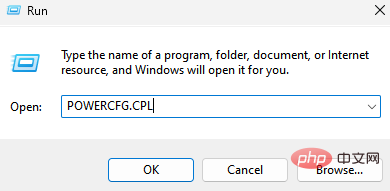The types of hard drives can be divided into: 1. Solid state drive (SSD), which uses flash memory particles to store; 2. Mechanical hard drive (HDD), which uses magnetic discs to store; 3. Hybrid hard drive (HHD), It is a hard disk that integrates magnetic hard disk and flash memory.

The hard drive is one of the main storage media of the computer and consists of one or more aluminum or glass discs. The disc is covered with ferromagnetic material.
1. Types
Hard drives include solid state drives (SSD disks, new hard drives), mechanical hard drives (HDD traditional hard drives), and hybrid hard drives (HHD, a new hard drive based on traditional mechanical hard drives) . SSD uses flash memory particles for storage, HDD uses magnetic discs for storage, and hybrid hard disk (HHD: Hybrid Hard Disk) is a hard drive that integrates magnetic hard disk and flash memory. The vast majority of hard drives are fixed hard drives, permanently sealed and secured within the hard drive.
2. Capacity
As the data storage of computer system, capacity is the most important parameter of hard disk.
The capacity of a hard disk is measured in megabytes (MB/MiB), gigabytes (GB/GiB) or terabytes (TB/TiB). The common conversion formula is: 1TB =1024GB, 1GB=1024MB and 1MB=1024KB. However, hard disk manufacturers usually use GB, that is, 1G = 1000MB, and the Win system still uses the word "GB" to represent the "GiB" unit (converted to 1024), so we can see it in the BIOS or when formatting the hard disk. The resulting capacity will be smaller than the manufacturer's nominal value.
The capacity index of the hard disk also includes the single disk capacity of the hard disk. The so-called single disk capacity refers to the capacity of a single hard disk platter. The larger the single disk capacity, the lower the unit cost and the shorter the average access time.
Generally speaking, the larger the hard disk capacity, the cheaper the price per byte, but there are slight exceptions for hard disks that exceed the mainstream capacity.
When we bought the hard drive, it was said to be 500G, but the actual capacity was smaller than 500G. Because the manufacturer converts according to 1MB = 1000KB, so when we buy a new hard drive, the actual usage is smaller than when we buy it.
3. Rotation speed
Rotation speed (Rotational Speed or Spindle speed) is the rotation speed of the motor spindle in the hard disk, which is the maximum number of revolutions that the hard disk platter can complete in one minute. The speed of rotation is one of the important parameters that indicates the grade of the hard disk. It is one of the key factors that determines the internal transmission rate of the hard disk and directly affects the speed of the hard disk to a large extent. The faster the hard disk rotates, the faster the hard disk searches for files, and the corresponding hard disk transmission speed is also improved. The hard disk speed is expressed in revolutions per minute, and the unit is RPM. RPM is the abbreviation of Revolutions Per minute, which is revolutions per minute. The larger the RPM value, the faster the internal transfer rate, the shorter the access time, and the better the overall performance of the hard drive.
The spindle motor of the hard disk drives the platter to rotate at high speed, generating buoyancy to make the magnetic head float above the platter. To bring the sector of data to be accessed under the head, the faster the rotation speed, the shorter the waiting time. Therefore, the rotational speed determines the speed of the hard drive to a large extent.
The speeds of ordinary hard drives for home use generally include 5400rpm and 7200rpm. High-speed hard drives are also the first choice for desktop computer users; while for notebook users, 4200rpm and 5400rpm are the main ones, although some companies have released 10000rpm notebooks. Hard drives are relatively rare in the market; server users have the highest requirements for hard drive performance. SCSI hard drives used in servers basically use 10,000rpm, and even 15,000rpm, and their performance is much higher than that of household products. Higher rotational speed can shorten the average seek time and actual read and write time of the hard disk. However, as the hard disk rotation speed continues to increase, it also brings negative effects such as temperature increase, increased motor spindle wear, and increased operating noise.
4. Manufacturer
1. Seagate
Seagate was founded in 1980 and is now the world's largest manufacturer of hard drives, magnetic disks and read-write heads. Seagate is a global leader in the design, manufacture and sale of hard drives for enterprise, desktop computers, mobile devices and consumer electronics. ,
2005 merger and acquisition of Maxtor
April 2011-December 2011 After acquiring the hard drive business of Samsung, it became the largest hard drive manufacturer.
2. Western Digital
Western Digital is a world-renowned hard drive manufacturer and is now the second largest hard drive manufacturer in the world. It was founded in 1979 and is headquartered in California, USA. It has branches or offices around the world to provide storage products to users on five continents. It acquired Hitachi in March 2011.
3. Hitachi (HITACHI)
HITACHI Hitachi Group is one of the world's largest comprehensive multinational groups. It produces desktop computer hard drives and notebook hard drives. In 2002, it acquired IBM's hard disk production division. It was acquired by Western Digital in March 2011.
4. Toshiba (TOSHIBA)
Japan’s largest semiconductor manufacturer and the second largest comprehensive motor manufacturer, it is affiliated to the Mitsui Group. Mainly produces mobile storage products.
5.Samsung
The abbreviation of Samsung Group, South Korea’s largest enterprise group. It manufactures hard drives for use in desktop computers, mobile devices and consumer electronics. On April 19, 2011, Seagate officially announced the acquisition of Samsung's hard drive business for US$1.375 billion (cash and stock). On December 20, 2011, Seagate announced that it had completed the acquisition of Samsung Electronics Co., Ltd.'s hard drive business.
5. Interface types
ATA
ATA, the full name of Advanced Technology Attachment, uses a traditional 40-pin parallel port data cable to connect the motherboard and hard disk. The maximum external interface speed is 133MB/s, because the anti-interference performance of the parallel port cable is too poor, and the cable takes up space, which is not conducive to computer heat dissipation, and will be slowly replaced by SATA.
IDE
The full name is Integrated Drive Electronics, which is "electronic integrated drive", commonly known as PATA parallel port.
Advantages of RAID
1. High transmission rate. In some RAID modes, many disk drives can transmit data at the same time, and these disk drives are logically one disk drive, so using RAID can achieve several times the speed of a single disk drive. Because the speed of processors is increasing rapidly, and the data transfer rate of disk drives cannot be significantly increased, a solution is needed to resolve the contradiction between the two. 2. Higher security. Compared with ordinary disk drives, many RAID modes provide a variety of data repair functions. When a disk drive in the RAID has a serious problem and cannot be used, the data in this drive can be restored through other disk drives in the RAID. Ordinary disk drives cannot achieve this, which is the second reason for using RAID
SATA
In 2001, it was formed by several major manufacturers including Intel, APT, Dell, IBM, Seagate and Maxtor The Serial ATA Committee formally established the Serial ATA 1.0 specification. In 2002, although Serial ATA related equipment had not yet been officially launched, the Serial ATA Committee had taken the lead in establishing the Serial ATA 2.0 specification. Serial ATA uses a serial connection method. The Serial ATA bus uses embedded clock signals and has stronger error correction capabilities. Compared with the past, its biggest difference is that it can check the transmission instructions (not just data) and if found Errors are corrected automatically.
SATA Ⅱ
SATA Ⅱ is developed on the basis of SATA by chip giant Intel and hard drive giant Seagate. Its main feature is that the external transfer rate is further improved from SATA's 150MB/s. At 300MB/s, it also includes a series of technical features such as NCQ (Native Command Queuing), Port Multiplier, and Staggered Spin-up. However, not all SATA hard drives can use NCQ technology. In addition to the hard drive itself supporting NCQ, the SATA controller of the motherboard chipset is also required to support NCQ.
SATA Ⅲ
The official name is "SATARevision3.0". It is a new version of the specification released by the Serial ATA International Organization (SATA-IO) in May 2009. It mainly doubles the transmission speed. 6Gbps, while being backward compatible with the old version of the specification "SATARevision2.6" (now commonly known as SATA3Gbps), the interface and data cable have not changed. The SATA3.0 interface technical standard was proposed by Intel in the first half of 2007 and is headed by Knut Grimsrud, technical director of Intel's storage product architecture planning department. Knut Grimsrud said that the transmission rate of SATA3.0 will reach 6Gbps, which will be doubled based on SATA2.0.
SCSI
The full English name of SCSI is "Small Computer System Interface" (Small Computer System Interface). It is a completely different interface from IDE (ATA). The IDE interface is the standard for ordinary PCs. interface, and SCSI is not an interface specifically designed for hard disks. It is a high-speed data transmission technology widely used on minicomputers. The SCSI interface has the advantages of wide range of use, multi-tasking, large bandwidth, low processor occupancy, and hot-swappability. However, the higher price makes it difficult to be as popular as IDE hard drives, so SCSI hard drives are mainly used in mid- to high-end in servers and high-end workstations.
Fibre Channel
The English spelling of Fiber Channel is Fiber Channel. Like the SCSI interface, Fiber Channel was not originally an interface technology developed for hard disk planning. It was specifically designed for network systems, but it has Due to the storage system's need for speed, it was slowly used in hard disk systems. Fiber Channel hard drives were developed to improve the speed and flexibility of multi-hard drive storage systems. Its emergence has greatly improved the communication speed of multi-hard drive systems. The main features of Fiber Channel are: hot-pluggability, high-speed bandwidth, remote connection, large number of connected devices, etc.
Fiber Channel is designed for multi-hard disk system environments such as servers. It can meet the needs of high-end workstations, servers, mass storage subnetworks, and peripherals for bidirectional and serial connections through hubs, switches, and point-to-point connections. Data communication and other systems have requirements for high data transmission rates.
Classification of RAID
RAID 0, a disk array with no redundancy and no parity. Data is distributed on various disks at the same time, with no fault tolerance. The read and write speed is the fastest in RAID. However, because any disk damage will cause the entire RAID system to fail, the safety factor is actually lower than that of a single disk. It is generally used in situations that do not require high data security but high speed requirements, such as large-scale games, graphics and image editing, etc. This RAID mode requires at least 2 disks, and more disks can provide more efficient data transfer.
SAS
SAS (Serial Attached SCSI) is a new generation of SCSI technology. It is the same as the popular Serial ATA (SATA) hard disk, which uses serial technology to obtain higher transmission speeds. And improving the internal space by shortening the connecting lines. SAS is a new interface developed after the parallel SCSI interface. This interface is designed to improve the performance, availability and scalability of the storage system, and to provide compatibility with SATA hard drives.
6. Maintenance
1. Keep the computer working environment clean
The hard disk has a breathing hole with ultra-fine filter paper that is connected to the outside world. It can be used in normal environments without If the purification device is used in an indoor environment with severe dust, it will be adsorbed to the surface of the PCBA, the inside of the spindle motor and clog the breathing filter, so it must be protected from dust. In addition, humid environment and unstable voltage may cause hard disk damage.
2. Develop the habit of shutting down correctly
If the power of the hard disk is suddenly turned off while the hard disk is working, it may cause violent friction between the magnetic head and the disk and damage the hard disk. It may also cause the magnetic head to fail to reset correctly, causing Hard drive scratches. When shutting down, be sure to pay attention to whether the hard disk indicator light on the panel is still flashing. You can only shut down the computer when the hard disk indicator light stops flashing and the hard disk has finished reading and writing.
3. Move the hard disk correctly and pay attention to shockproof
When moving the hard disk, it is best to wait for more than ten seconds after shutting down the hard disk to completely stop spinning. When the hard disk is turned on, the hard disk rotates at high speed. A slight vibration may cause the disc and the read-write head to rub against each other, resulting in bad tracks on the disk or damage to the read-write head. Therefore, never move the hard drive or chassis while the computer is powered on. It is best to wait for more than ten seconds after the computer is turned off and the hard drive has completely stopped before moving the host or restarting the power supply. This can avoid damage to the hard drive caused by instantaneous power surges. You should be more careful when installing and disassembling the hard disk. It is strictly forbidden to bump the hard disk when moving and transporting it. It is best to protect it with foam or sponge packaging to minimize vibration.
Note: The so-called "anti-collision capability" or "anti-shock system" of the hard drive manufacturer refers to the anti-shock and anti-collision capabilities of the hard drive when it is not started, not when it is powered on.
The above is the detailed content of What types of hard drives are there?. For more information, please follow other related articles on the PHP Chinese website!
 scsi disk device是固态硬盘吗Feb 24, 2023 pm 05:33 PM
scsi disk device是固态硬盘吗Feb 24, 2023 pm 05:33 PMscsi disk device不是固态硬盘。scsi disk device是采用SCSI接口的硬盘,是一种机械硬盘。SCSI硬盘的接口速度快,并且由于主要用于服务器,因此硬盘本身的性能也比较高,硬盘转速快,缓存容量大,CPU占用率低,扩展性远优于IDE硬盘,并且支持热插拔。
 5400转的硬盘读写速度是多少Mar 13, 2023 pm 05:13 PM
5400转的硬盘读写速度是多少Mar 13, 2023 pm 05:13 PM5400转的硬盘读写速度一般为100MB-150MB每秒;但实际情况可能会有所不同,影响硬盘速度的还有很多因素,比如AHCI模式比IDE模式快,传输单个文件比传输多个文件快,SATA3接口比SATA2接口等等。
 hdd是什么硬盘Jan 30, 2023 am 10:22 AM
hdd是什么硬盘Jan 30, 2023 am 10:22 AMhdd指的是机械硬盘,主要由盘片、磁头、盘片转轴及控制电机、磁头控制器等等机械装置组成的。机械硬盘在生产过程中全程位于无尘厂房,任何一粒微小的灰尘落到盘面在其一分钟上千转的工作状态下对整个磁盘都是毁灭性的打击。
 监控硬盘可以当电脑硬盘用吗Mar 17, 2023 pm 03:40 PM
监控硬盘可以当电脑硬盘用吗Mar 17, 2023 pm 03:40 PM监控硬盘可以当电脑硬盘用。监控硬盘的储存形式与电脑硬盘没有任何区别,只要电脑具备支持监控硬盘的数据接口和供电接口,就可以当作电脑硬盘使用。但如果是当作主硬盘使用,需要对硬盘进行分区,然后重新安装系统才可以;作为监控硬盘时,里面存储的都是视频数据,作为电脑主硬盘时,就需要重新安装系统。
 如何更改win7系统硬盘图标Jul 07, 2023 pm 11:43 PM
如何更改win7系统硬盘图标Jul 07, 2023 pm 11:43 PM是否看够了Windows7系统中的硬盘分区图标,那么今天我们就来尝试DIY一个自己喜欢的硬盘图标。以下是详细的操作步骤,希望对大家有所帮助。首先,您需要准备一个硬盘或您喜欢的图标文件,这里使用的是ico格式图标。1.打开您想要修改硬盘分区图标的盘,然后将ico文件放入根目录中,我在这里修改D盘。2.右键在D盘根目录中,创建一个名为autorun的空白文本,并将其扩展名txt修改为inf。3.打开文件,输入以下内容并保存:[autorun]icon=favicon.ico。4.正常重启电脑后,D盘
 如何在 Windows 11 中的空闲时间后更改关闭硬盘May 16, 2023 am 08:58 AM
如何在 Windows 11 中的空闲时间后更改关闭硬盘May 16, 2023 am 08:58 AM虽然现在硬盘更容易获得并且速度更快,但它们最终仍会消耗大量电力,特别是在笔记本电脑上。硬盘消耗更多的电量,最终会比应有的更快耗尽笔记本电脑的电池,因此,用户更喜欢在空闲时间后关闭硬盘。此功能是在Windows10的电源管理选项中引入的,有助于延长笔记本电脑的电池寿命。虽然它可能会在具有平衡电源计划或节电计划的系统中自动启用,但您也可以手动打开此功能。只要您的PC在所选时间段内处于空闲状态,这将关闭硬盘。反过来,这将自动使用更少的电量,从而节省笔记本电脑的电池寿命。但是,当您想重新使用PC时,
 硬盘插到电脑上没反应是什么原因Jul 05, 2023 pm 03:22 PM
硬盘插到电脑上没反应是什么原因Jul 05, 2023 pm 03:22 PM硬盘插到电脑上没反应的原因:1、USB插槽供电不足;2、移动硬盘内部的硬盘老化,需要更大的电量来驱动;3、电脑插槽坏了;4、USB插槽设备冲突或者驱动出现问题。
 nas硬盘和普通硬盘有什么区别Jun 15, 2023 pm 03:30 PM
nas硬盘和普通硬盘有什么区别Jun 15, 2023 pm 03:30 PMnas硬盘和普通硬盘的区别:1、nas依照企业级的环境要求设计的,以7天*24小时的工作时间为基础,普通硬盘的设计是以5天*8小时的工作时间为基础;2、nas硬盘增加了全新的传输模式,“不间断传输模式”,能保证24小时任何一个终端都能随时读取写入,而普通硬盘做不到;3、nas硬盘的运行时只需8W功耗,普通机械硬盘运行时需要14W左右功耗;4、价格不同,nas硬盘比普通硬盘贵。

Hot AI Tools

Undresser.AI Undress
AI-powered app for creating realistic nude photos

AI Clothes Remover
Online AI tool for removing clothes from photos.

Undress AI Tool
Undress images for free

Clothoff.io
AI clothes remover

AI Hentai Generator
Generate AI Hentai for free.

Hot Article

Hot Tools

Atom editor mac version download
The most popular open source editor

mPDF
mPDF is a PHP library that can generate PDF files from UTF-8 encoded HTML. The original author, Ian Back, wrote mPDF to output PDF files "on the fly" from his website and handle different languages. It is slower than original scripts like HTML2FPDF and produces larger files when using Unicode fonts, but supports CSS styles etc. and has a lot of enhancements. Supports almost all languages, including RTL (Arabic and Hebrew) and CJK (Chinese, Japanese and Korean). Supports nested block-level elements (such as P, DIV),

SublimeText3 Linux new version
SublimeText3 Linux latest version

VSCode Windows 64-bit Download
A free and powerful IDE editor launched by Microsoft

ZendStudio 13.5.1 Mac
Powerful PHP integrated development environment






